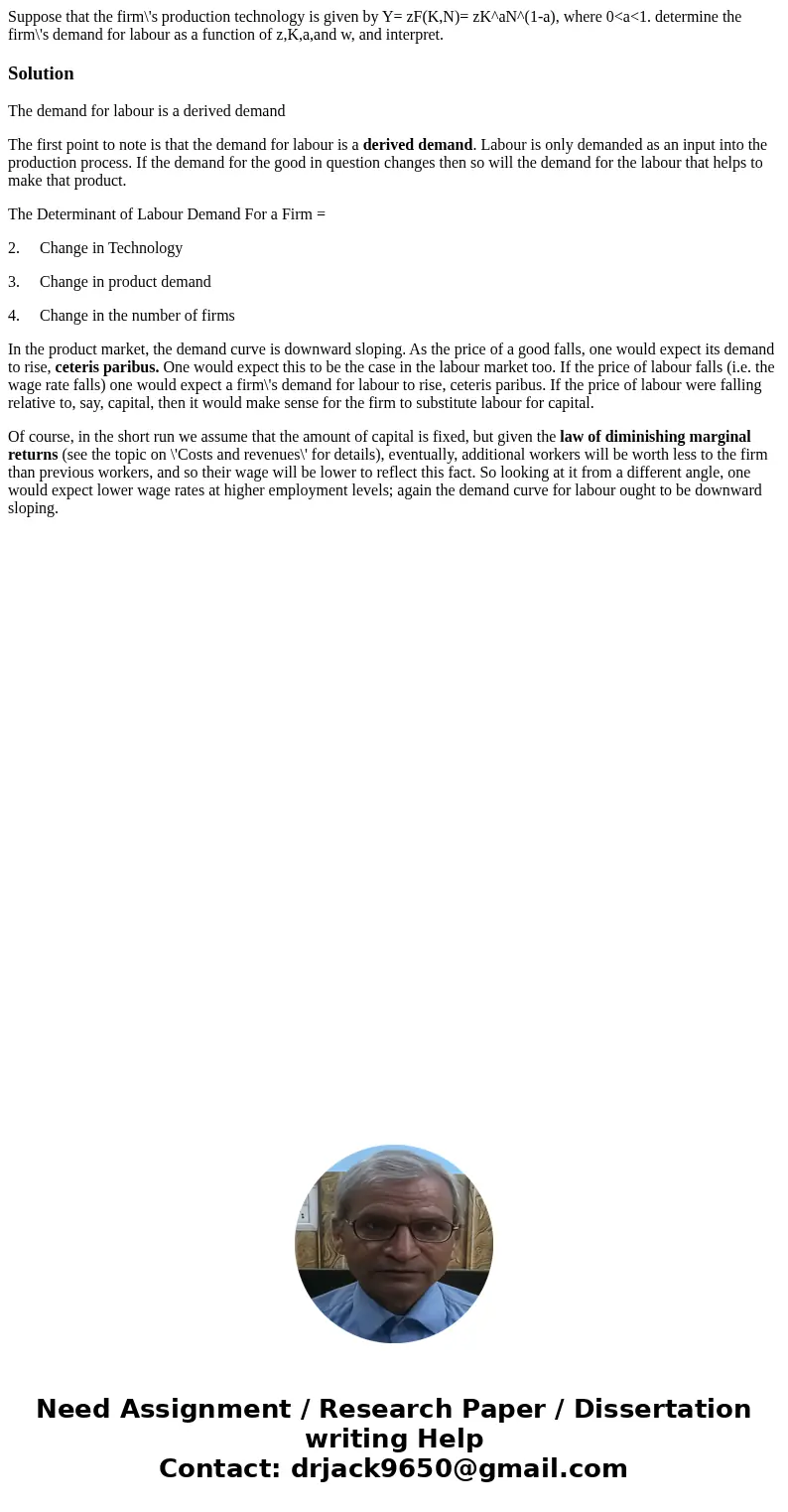Suppose that the firms production technology is given by Y z
Suppose that the firm\'s production technology is given by Y= zF(K,N)= zK^aN^(1-a), where 0<a<1. determine the firm\'s demand for labour as a function of z,K,a,and w, and interpret.
Solution
The demand for labour is a derived demand
The first point to note is that the demand for labour is a derived demand. Labour is only demanded as an input into the production process. If the demand for the good in question changes then so will the demand for the labour that helps to make that product.
The Determinant of Labour Demand For a Firm =
2. Change in Technology
3. Change in product demand
4. Change in the number of firms
In the product market, the demand curve is downward sloping. As the price of a good falls, one would expect its demand to rise, ceteris paribus. One would expect this to be the case in the labour market too. If the price of labour falls (i.e. the wage rate falls) one would expect a firm\'s demand for labour to rise, ceteris paribus. If the price of labour were falling relative to, say, capital, then it would make sense for the firm to substitute labour for capital.
Of course, in the short run we assume that the amount of capital is fixed, but given the law of diminishing marginal returns (see the topic on \'Costs and revenues\' for details), eventually, additional workers will be worth less to the firm than previous workers, and so their wage will be lower to reflect this fact. So looking at it from a different angle, one would expect lower wage rates at higher employment levels; again the demand curve for labour ought to be downward sloping.

 Homework Sourse
Homework Sourse